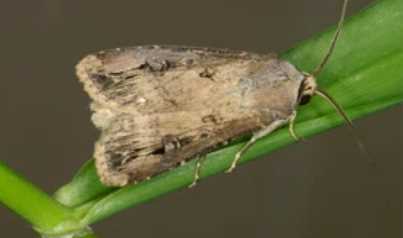Gene Editing in Agrotis Ipsilon

Agrotis ipsilonis a small noctuid moth found worldwide. The larvae are known as "cutworms" because they cut plants and other crops. The larvae are serious agricultural pests and feed on nearly all varieties of vegetables and many important grains. They will often eat all the weeds available before moving to attacking crops. Adults feed on flower nectar. They are also attracted to deciduous trees and shrubs such as linden, wild plum, crabapple, and lilac. They are a pollinator of fetterbush lyonia.
Our Services for Gene Editing in Agrotis Ipsilon
Each larva of agrotis ipsilon can consume over 400 square centimetres of foliage during its development. Three methods have been used to control agrotis ipsilon, including physical control, chemical control and biological control, but they are ineffective or very harmful to the environment or harmful to non-target species. Lifeasible provides gene editing services for agrotis ipsilon with zinc-finger nucleases (ZFNs), transcription activator-like effector nucleases (TALEN) and CRISPR/Cas9 to control their reproduction and reduce the harm caused by agrotis ipsilon.
| Editable genes |
Relevant traits exhibited after editing |
| AiGSTs1 |
- We can edit AiGSTs1 to reduce the detoxification metabolism of agrotis ipsilon to insecticides and increase the resistance susceptibility of agrotis ipsilon, thus achieving control of agrotis ipsilon population.
|
| AipsCSP2 |
- We can edit AipsCSP2 to reduce the number of agrotis ipsilon by regulating the synthesis and recognition process of agrotis ipsilon sex pheromone and the reproductive activity of agrotis ipsilon, decreasing the mating rate and growth and development rate.
|
| AipsCSP8 |
- We can edit AipsCSP8 to reduce the olfactory recognition process of agrotis ipsilon and reduce the sensing of chemical pesticides by agrotis ipsilon, also reduce the gustatory recognition process of agrotis ipsilon.
|
| AipsCSP9 AipsCSP10 |
- We can edit AipsCSP9 and AipsCSP10, reduce the olfactory recognition process of agrotis ipsilon and reduce the sensing of chemical pesticides by agrotis ipsilon.
|
| GOBPs |
- We can edit GOBPs, such as AipsGOBP2 and AipsGOBP1, disrupt the process of sensory pheromone and host localization in agrotis ipsilon. This experiment can be used to screen and design effective elicitors and trophozoites.
|
| AiTH |
- AiTH plays an essential role in the growth and development of agrotis ipsilon, and mutations in the AiTH gene affect the regulation of the melanin pathway to the organism. Using the lethality of AiTH gene, we provide a potential target gene for the genetic regulation of insect populations to control pests, and provide a new idea for the effective prevention and control of agrotis ipsilon population outbreaks and damage.
|
| DDC |
- We can provide the knockdown of DDC to affect the melanin synthesis, and growth and development of agrotis ipsilon.
|
Advantages
- Editing drug resistance-associated genes increases the resistance susceptibility of agrotis ipsilon.
- Editing olfactory-related genes to reduce the alter the process of sensory pheromone and other olfactory recognition process of agrotis ipsilon.
- Editing growth and development-related genes to affect the melanin pathway to agrotis ipsilon and control this organism.
Lifeasible offers three means including ZFNs, TALEN and CRISPR/Cas9 to edit some genes to control agrotis ipsilon by reducing the process of olfactory recognition and sensory pheromone, and increasing the resistance susceptibility. If you are interested in our services or if you have any questions, please click online inquiry for more detailed information.
Reference
- Picimbon, J.F. Interpopulational Variations of Odorant-Binding Protein Expression in the Black Cutworm Moth, Agrotis ipsilon. Insects, 2020, 11(11):798.
For research or industrial raw materials, not for personal medical use!
